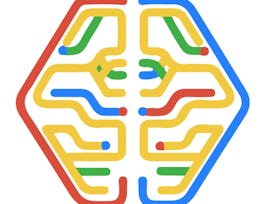Machine learning is the foundation for predictive modeling and artificial intelligence. If you want to learn about both the underlying concepts and how to get into building models with the most common machine learning tools this path is for you. In this course, you will learn the core principles of machine learning and how to use common tools and frameworks to train, evaluate, and use machine learning models.



Create Machine Learning Models in Microsoft Azure
This course is part of Microsoft Azure Data Scientist Associate (DP-100) Exam Prep Professional Certificate

Instructor: Microsoft
Sponsored by MAHE Manipal
30,381 already enrolled
(271 reviews)
Recommended experience
What you'll learn
How to plan and create a working environment for data science workloads on Azure
How to run data experiments and train predictive models
Skills you'll gain
Details to know

Add to your LinkedIn profile
23 assignments
See how employees at top companies are mastering in-demand skills

Build your Software Development expertise
- Learn new concepts from industry experts
- Gain a foundational understanding of a subject or tool
- Develop job-relevant skills with hands-on projects
- Earn a shareable career certificate from Microsoft


Earn a career certificate
Add this credential to your LinkedIn profile, resume, or CV
Share it on social media and in your performance review

There are 3 modules in this course
Data exploration and analysis is at the core of data science. Data scientists require skills in languages like Python to explore, visualize, and manipulate data. In this module, you will learn how to use Python to explore, visualize, and manipulate data. You will also learn how regression can be used to create a machine learning model that predicts numeric values. You will use the scikit-learn framework in Python to train and evaluate a regression model.
What's included
7 videos14 readings9 assignments1 discussion prompt
Classification is a kind of machine learning used to categorize items into classes. In this module, you will learn how classification can be used to create a machine learning model that predicts categories, or classes. You will use the scikit-learn framework in Python to train and evaluate a classification model. You will also learn how clustering can be used to create unsupervised machine learning models that group data observations into clusters. You will use the scikit-learn framework in Python to train a clustering model.
What's included
7 videos7 readings8 assignments
In this module, you will learn about the fundamental principles of deep learning, and how to create deep neural network models using PyTorch or Tensorflow. You will also explore the use of convolutional neural networks to create image classification models.
What's included
8 videos4 readings6 assignments1 discussion prompt
Why people choose Coursera for their career




Learner reviews
271 reviews
- 5 stars
67.75%
- 4 stars
24.63%
- 3 stars
3.26%
- 2 stars
1.44%
- 1 star
2.89%
Showing 3 of 271
Reviewed on Dec 3, 2023
Condense but solid course on ML basics. AND first time I was guided in a cloud provider for ML use cases without having to shed tears from frustration. Very good to gain first familiarity with Azure.
Reviewed on Apr 27, 2023
Good course with a focus on helping the learner to better understand ML concepts and the coding associated to it before diving deep into Azure tool
Reviewed on Aug 7, 2024
Really annoying and very hard authentication puzzle where you have to identify matching items 15 times. I want to learn, not spend my time doing stupid authentication puzzles.
Recommended if you're interested in Computer Science

Coursera Project Network

Amazon Web Services

Google Cloud

Google Cloud

Open new doors with Coursera Plus
Unlimited access to 10,000+ world-class courses, hands-on projects, and job-ready certificate programs - all included in your subscription
Advance your career with an online degree
Earn a degree from world-class universities - 100% online
Join over 3,400 global companies that choose Coursera for Business
Upskill your employees to excel in the digital economy


